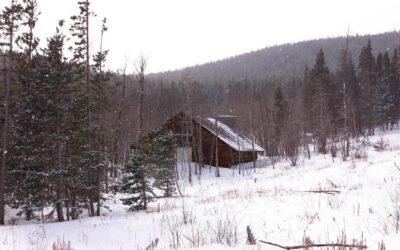Dr. Vera Samburova works in the organic analytical lab at Desert Research Institute, in Reno, Nev., on Tuesday, Feb. 20, 2018. Photo by Cathleen Allison/Nevada Momentum.
Reno, Nev. (Thursday, March 1, 2018) – The Nevada System of Higher Education (NSHE) Board of Regents this week awarded Vera Samburova, Ph.D., an assistant research professor of atmospheric chemistry and air pollution at DRI, with its annual Rising Researcher Award.
She was recognized for her early-career accomplishments and leading a new and exciting area of research at DRI looking at inhalation and indoor air quality related health effects. The honor is given annually to one NSHE faculty member from DRI, UNR, and UNLV.
As a member of the DRI’s Organic Analysis Laboratory, Samburova’s research focuses on the collection and analysis of atmospheric organic species, characterization and quantification of organic emissions from various sources like biomass burning and fossil fuels.
She recently initiated an internally funded research project investigating the emissions from e- cigarettes. Her research team found that the aerosols (commonly called vapors) produced by flavored e-cigarettes liquids contain dangerous levels of hazardous chemicals known to cause cancer in humans. Their research was published in Environmental Science & Technology (ES&T), a journal of the American Chemical Society.
“The health impacts of e-cigarettes are still widely unknown and not researched,” said Samburova. “I am incredibly honored to be recognized for this important work and everything that our team at DRI has done to advance this important and emerging field of research.”
Samburova has authored a total of 35 peer reviewed publications, 20 since joining DRI, and seven of which she was the first author. She has served as a principal investigator, and co-principal investigator, and a key personnel/scientist for 15 projects that have received over $2 million in external research funding.
She is also actively involved in the Atmospheric Sciences Graduate Program at the University of Nevada, Reno where she has taught classes every year starting in 2008 and has been the Deputy Director of that program for the last five years.
Samburova received her Ph.D. in Environmental Organic Chemistry from the Swiss Federal Institute of Technology, Zurich in 2007, after which she was recruited at Desert Research Institute as a Post Doc and subsequently transitioned to an Assistant Research Professor.
The Desert Research Institute (DRI) is a recognized world leader in investigating the effects of natural and human-induced environmental change and advancing technologies aimed at assessing a changing planet. For more than 50 years DRI research faculty, students, and staff have applied scientific understanding to support the effective management of natural resources while meeting Nevada’s needs for economic diversification and science-based educational opportunities. With campuses in Reno and Las Vegas, DRI serves as the non-profit environmental research arm of the Nevada System of Higher Education. For more information, please visit www.dri.edu.


